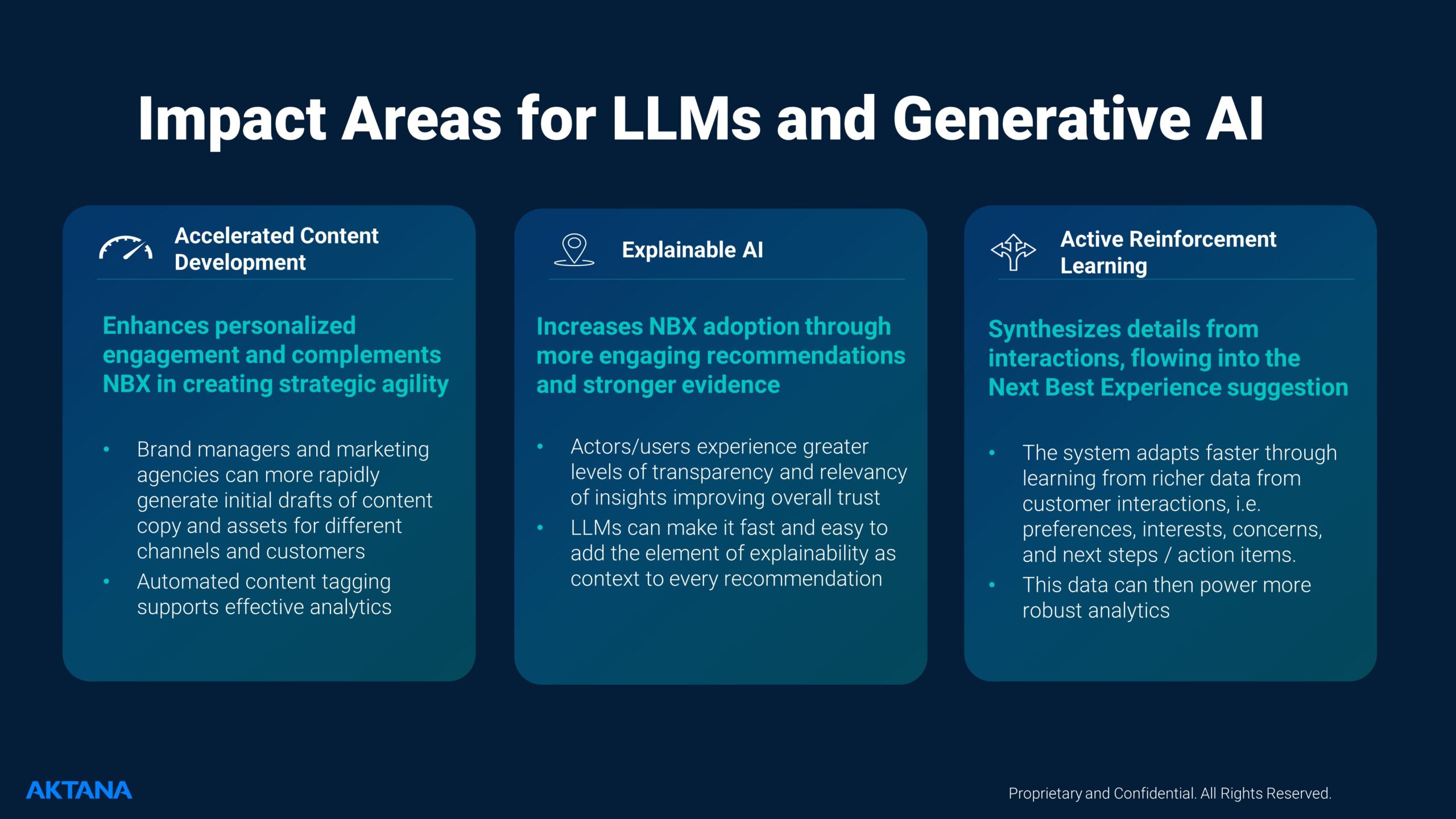The world is abuzz about how generative artificial intelligence (AI), such as OpenAI’s ChatGPT, might revolutionize how we work. In one year, over 140 generative-AI startups launched, securing massive amounts of funding. Microsoft made a reported $10 billion investment in OpenAI, and other big tech firms, including Google and Meta, have launched their own generative AI tools.
Will this next-generation technology usher in a bold creative revolution that upends much of how we go about our business every day? While the jury is still out on how far AI will take us, there is little question that large language models (LLMs), or generative AI, offer an impressive amount of promise. And there is every reason to believe that, if managed adeptly, this technology will be transformative.
More Than Just Hype? No Question.
But that’s not to say that generative AI/LLM is some kind of panacea. Like any emerging technology, numerous hurdles will have to be cleared before we can truly harness all that it has to offer. For the life sciences industry, there are questions about the technology’s accuracy, as well as concerns relating to ethics, privacy, and security. In commercial, issues related to Medical, Legal, and Regulatory (MLR) review compliance will need to be carefully managed as well. Yet given how well AI has mastered general-purpose knowledge, learns from its own mistakes, challenges incorrect premises, and recalls information from previous interactions, there is every reason to believe that these concerns can be overcome. And while it is still too early to predict exactly how generative AI/LLMs will specifically impact pharmaceutical commercialization, several promising use cases are already emerging.
Given the enormous hype that has been generated around AI in recent months, it’s easy to lose sight of just how diverse and dynamic LLM technology can be. Yet much in the same way that you wouldn’t use your driver to chip a golf ball onto the green, LLMs are not one-size-fits-all. As we plan for the implementation of various LLM applications, the industry must remain thoughtful and intentional about how best to deploy and augment the technology. If handled properly, LLMs will play an important role in improving data capture and automation, creating efficiencies that will enable us to achieve much more with less.
Three key LLM applications the commercial life sciences can start leveraging now are:
1. Accelerated Content Creation and Organization
Personalized engagement is crucial for successful commercialization, especially as more physicians have come to expect it from their online interactions as consumers. But creating the high volumes of content that are required to personalize engagement is time consuming. LLM/generative AI is ideally suited to assist brand managers, customer experience professionals, and sales teams—medical science liaisons, too—with some of the heavy lifting to create, organize, and analyze customized content.
For example, LLMs/generative AI can almost instantaneously create initial drafts of copy for a variety of customer channels. While this content will still require editing and refinement by marketing teams, as well as the required MLR review processes, AI can help to expedite the process and empower marketing teams to become more efficient and focused.
Auto-tagging, a laborious task, is another area where generative AI/LLMs can assist. Auto-tagging helps the right content get delivered to the appropriate customers. Generative AI has already proven its ability to automate content tagging, which saves creators tremendous time and effort, as well as reduces the possibility of mistakes.
2. Explainable AI to Build Confidence in Taking Next Best Actions
AI is inherently considered a “black box” technology, providing users with little visibility into how AI-powered systems make their decisions, and this lack of transparency inevitably casts doubt. The lack of rationale prevents some users from accepting the accuracy of machines whose mechanics we cannot easily see or comprehend. So while AI has proven to be exceptional at analyzing a wide range of data and information in order to deliver optimized next-best-action (NBA) recommendations to life sciences commercial teams, success hinges on system adoption and the most vexing hurdle to overcome is often the skepticism of the customer-facing representative.
Long-term, widespread adoption hinges on the same systems producing transparent explanations for their decisions—a form of science known as explainable AI (xAI). Today’s most advanced AI-powered NBA solutions incorporate xAI with a blend of other analytics technologies and human insight to improve decision-making by building real-life context and plain-language explanations into recommendations. However, the volume of NBA recommendations can slow this process. Generative AI can automatically add context to every recommendation, explaining why a specific action has been chosen and thereby increasing the likelihood that the action will be adopted.
3. Automated Insight Gathering to Power More Robust Analytics
Being able to effectively transcribe and summarize interactions between representatives and healthcare professionals is at the heart of how we manage our relationships. Properly managing data about customer interactions—including preferences, interests, concerns, and action items, however—is often laborious and time consuming, and so does not always happen. Generative AI can help companies quickly synthesize important insights from interactions (such as from the text and images in approved content, the compliant transcripts of interactions, or notes and data captured by representatives) and automatically turn on-the-ground insights into increasingly robust analytics in the form of better NBA recommendations that will help develop fruitful relationships.
 The Ever-Changing Future
The Ever-Changing Future
While it might seem obvious, it’s important to remember that technology never exists within a vacuum. Technology companies are hard at work developing similar products or improving upon existing ones. For example, in March, OpenAI unveiled GPT4, an even more powerful and capable language model. And that’s only the beginning of what we can expect to see in the months and years ahead. Moreover, peripheral products are also being developed to work in conjunction with generative AI models to make them more effective. Entirely new jobs are also being developed around AI, such as “prompt engineers” who write questions for chatbots to test and improve their answers.
And, as good as generative AI/LLM is for certain use cases, it is not designed for (and will not help with) use cases where specific decisions need to be recommended to optimize for specific goals and constraints. For example, to get accurate, contextually relevant, and appropriately constrained answers from chatbots like ChatGPT, the right questions need to be asked. Decision-making AI is needed to recommend the “who,” “what,” “when,” “where,” and “how” prompts that generative AI/LLM needs to be able to give a relevant answer.
This is a brave new world. From manufacturing to marketing, few business sectors have not already been impacted by the emergence of generative AI/LLMs. And it’s only the tip of the iceberg. But like any new technology, it will take some time before reliable applications of the technology fully come into focus. The life sciences industry should expect to see similar disruption as well. Yet, if we are prepared to embrace this technology to improve upon the work that we are already doing, the possibilities for where it might take us are limitless.









